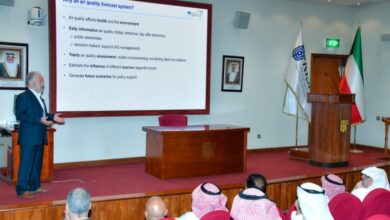
By Elisa Belfiori and Yanel Llohis
Special to The Times Kuwait
Despite committing to nationally determined contributions (NDCs) in the 2015 Paris climate agreement to limit global warming, countries have struggled to meet their emissions-reduction targets. This is particularly true for developing countries, where pressing economic and political challenges tend to overshadow long-term climate objectives.
Implementing effective climate policy requires a shift in thinking. Climate change is both a negative externality and an inequality problem, raising the question of who should bear the costs of climate action within and between countries. Policymakers should focus more on the complicated tradeoff between economic efficiency and equity to ensure that developing countries do not shoulder the burden of the rich world’s historical carbon dioxide emissions, and that measures are in place to safeguard future generations.
Of course, the Paris agreement set clear goals while adhering to the principle of “common but differentiated responsibilities,” which means that all countries are responsible for addressing climate change, but not equally so. But there is still a tendency to focus on uniform targets. Consider the global push for net-zero greenhouse-gas (GHG) emissions by 2050 — a complimentary long-term goal outlined in the Paris agreement, and one with respect to which many developing countries remain far off track.
To achieve this ambitious goal, countries must be able to devise climate policy based on their capabilities and historical responsibilities, rather than adopting a one-size-fits-all strategy. Recent research suggests that this would require net-negative emissions targets for high-income countries, while allowing low-income countries to generate net-positive emissions. Of course, such differentiation is not a free pass: developing countries would still have to reduce GHG emissions. But this approach, embodying the spirit of “common but differentiated responsibilities,” better reflects their economic conditions and development needs.
Moreover, financial assistance from developed to developing countries to support climate action has been ineffective, owing mainly to transparency and accountability problems. In this context, the same study finds that carbon sequestration and capture, whether through technological innovations or natural solutions, could be a politically feasible alternative to direct monetary transfers. Enabling each country to monitor its own efforts to absorb carbon could bring the world closer to net-zero emissions while respecting diverse national circumstances.
Emissions in Latin America, for example, are split almost equally between energy, agriculture and livestock, and land use, whereas they are largely energy-related in the United States and Europe. Promoting sustainable agricultural and livestock practices — as opposed to focusing solely on decarbonizing the energy system — could therefore help reduce emissions in the region, as well-managed pastures and soil can increase carbon sequestration. This approach would also align private incentives with social returns by revaluing land and allowing farmers to remain internationally competitive.
The case of Argentina illustrates how improving the sustainability of agriculture and livestock could play a pivotal role in the transition to a green global economy. A series of economic crises, coupled with increasing political volatility, have led the Argentinian government to focus more on immediate problems than climate policy. But given the country’s position as a leading food producer, revamping these industries could help it enhance climate mitigation and adaptation — and contribute meaningfully to international goals — while recognizing its economic conditions and development needs.
This year, Argentina began certifying the production of carbon-neutral beef, a program that could reduce emissions if implemented correctly. The country has already started to embrace sustainable practices such as regenerative livestock farming, which increases carbon sequestration, productivity, and profitability by restoring the soil’s natural fertility. Moreover, Argentina is among the countries with the highest rates of no-tillage farming. This practice, which also helps store carbon, was used on more than 90 percent of its agricultural land in 2019-20.
Addressing domestic inequality is equally crucial in shaping effective climate policies in Argentina and other developing countries. Ongoing research demonstrates that conventional approaches, including uniform carbon taxes, fail to account for nuanced socioeconomic disparities. Implementing progressive taxation based on income levels or consumption patterns, such as higher taxes for frequent flyers, may yield better outcomes. Regardless, this problem demands innovative policy solutions that mirror the complexity of global climate governance.
Framing climate change as an inequality problem does not require compromising on global goals; rather, it underscores the importance of differentiated targets. Many developing countries remain a long way away from a fully decarbonized energy system. While taking steps toward that end, these countries should be encouraged to implement climate policies that harness innovations and alternative strategies for reducing emissions.
To achieve the ambitious goal of net-zero emissions by 2050, countries must be able to devise climate policy based on their capabilities and historical responsibilities, rather than adopting a one-size-fits-all strategy.

Elisa Belfiori
Laura Alfers is Director of the Social Protection Programme at Women in Informal Employment: Globalizing and Organizing.

Yanel Llohis
Yanel Llohis, a consultant at the World Bank’s Human Capital Project, is a research assistant at Universidad Torcuato Di Tella.
Copyright: Project Syndicate, 2024.
www.project-syndicate.org













